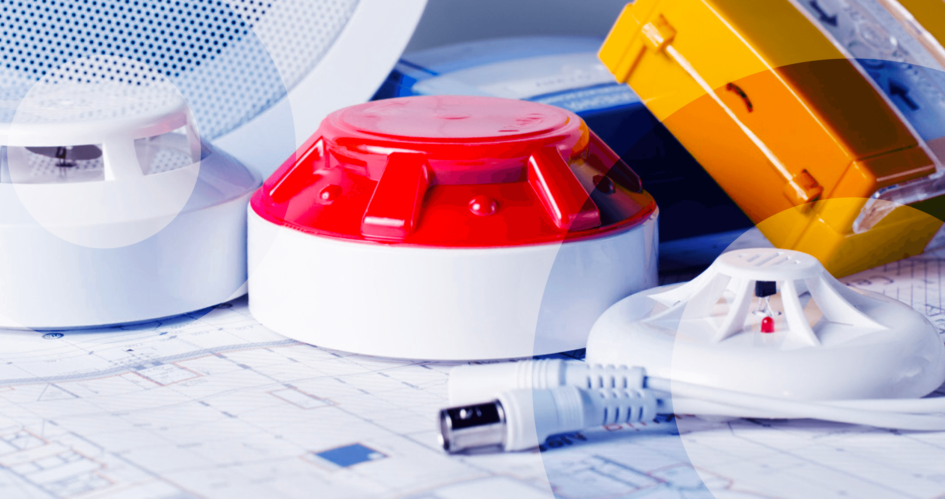All Systems GO
Whether your building is new or old, office or residential, high-rise or warehouse, there is no getting around the need to respond swiftly and responsibly in the event of an emergency.
When a fire happens, the occupants and the building itself are immediately put at risk. The extent of a fire’s growth and spread will vary from incident to incident, but the way your building’s safety systems respond and protect will play a major role in determining how severe a fire might be. The original systems will have been intended to provide a measure of protection, but what if your building’s design has changed? Or, what if a new system has been added that’s not compatible with an older system? Unfortunately, this is a regular occurrence as technology evolves and buildings undergo renovations, design changes, and conversions.
The solution? Assess the safety features in your facility and conduct an Integrated Systems Test. It’s the only way to ensure your building’s protection features are operating as they should…with no gaps.
“IST is a test method or process used in buildings to verify and document that all fire and life safety system interconnections work—and work correctly in conformance with their design criteria,” explains Matthew Hopley, Alberta Branch Manager at LRI Engineering Inc. “This includes the more obvious systems like sprinklers and fire alarms, but it also includes interconnections between less obvious things like door release hardware, elevators, audio/visual systems and specialized smoke control systems.”
Gone are the days when individual fire protection and life safety systems were installed and tested in isolation; today, it’s about testing interconnections and ensuring all protection features are working as a collective whole.
“Unlike the way things used to be done, when individual systems were commissioned from various trades and designers and not necessarily evaluated in concert, IST mitigates the risk that there will be gaps in your systems,” Hopley says. “A good comparison is that you can tune up an instrument individually and it may sound right, but once you try and have an orchestra play a song together, the conductor needs to make sure everyone sounds good as a group.”
Changing Codes & Building Designs
IST is highly recommended in cases where older buildings have been upgraded to meet new Building Codes, or when the tenancy has changed requiring a complete re-evaluation of the building’s protection features. The consequences of not implementing a thorough systems test could result in ineffective fire protection, exposing the owner to significant risk.
“If the interconnections between various protection features fail to operate as designed, the result could be catastrophic,” Hopley says.
For example, as the nature or amount of combustibles changes or the nature of the occupants requiring protection changes, the need for effective fire suppression and compartmentalization can change as well. Increases in combustible loading can result in a fire suppression system which no longer discharges sufficient water which may result in the sprinkler system being unable to control or suppress the fire. At the same time, different, unaware, or more vulnerable occupants in that same building will need to evacuate. If the passive fire protection systems do not hold back fire and smoke from the overwhelmed sprinkler system which can’t control the fire, then there is significant risk to both the occupants and first responders.
IST can be used as a tool to ensure that the relevant systems function together properly. Combined with solid advice on the ongoing adequacy of those fire and life safety systems can close the loop and help a building owner or manager understand that their building is up to the challenge.
In other words, for aging buildings and those that have undergone renovations or a change in tenancy, there’s a real need for property managers and owners to consider the impact these changes may have on the adequacy and functionality of the fire and life safety systems, either through IST or more fulsome design or hazard reviews. Additional consideration should be given to how these systems are intended to function during an emergency, and not just if they work at all.
“During the test, it’s good to have a knowledgeable person helping judge whether or not the systems will still protect occupants and assets to an appropriate degree,” he says. “This helps ensure each system is doing the job it was intended to do to keep tenants safe, and that organizations don’t take on unacceptable risk.”
Timeline & Process
The current standard for when to conduct an IST is prior to first occupancy in new buildings, with the second iteration required one year after that. Subsequent rounds of testing are needed at intervals not exceeding five years.
In terms of process, IST involves three stages beginning with a preliminary planning phase. “This is when the integrated testing coordinator works with the design professionals to develop an integrated testing plan,” Hopley says. “Following that, there is the implementation phase during which the test plan is executed. This is when the systems are tested and documented by the coordinator with the relevant stakeholders involved. The final phase is the documentation phase when the coordinator develops and issues the requisite documentation to record the completion of the test plan and the accompanying data and results.”
Getting the right advice and conducting the right inspections and testing, including IST, is key to maintaining a safe, compliant building, and minimizing risks to your assets.
For more information, contact the Fire and Building Code Engineers at LRI – www.lrifire.com






